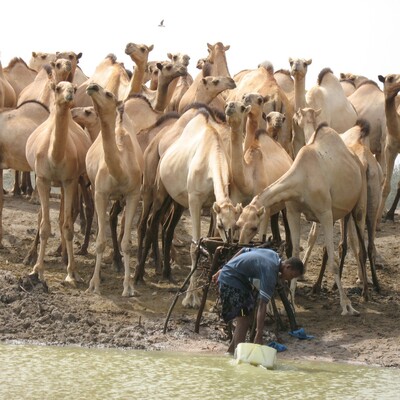
Managing and sharing knowledge on forages
Managing and sharing knowledge on forages
The ILRI forage germplasm information system was developed to share information about the germplasm held by ILRI as a global public good under the International Treaty on Plant Genetic Resources for Food and Agriculture. The web site includes information on the collection sites of material held in the ILRI genebank, as well as summary characterization data and an image collection of some of these materials. It also has factsheets on the management of some common forage species.
GENESYS is a rich source of information on plant genetic resources diversity of seeds conserved in genebanks worldwide. GENESYS is a gateway from which germplasm accessions from genebanks around the world can be easily found and ordered. GENESYS is the result of collaboration between Bioversity International (www.bioversityinternational.org/) on behalf of the CGIAR System-wide Genetic Resources Programme (SGRP), the Global Crop Diversity Trust (www.croptrust.org/) and the secretariat of the international Treaty on the Plant Genetic Resources for Food and Agriculture (www.planttreaty.org/). GENESYS helps to secure the long-term conservation of plant genetic resources.
The Forage Register is another initiative of the SGRP. It contains passport data for forage accessions conserved in a number of major collections of plant genetic resources. Attempts have been made to identify overlapping collections by cross-referencing the accessions having the same name(s) or collected on the same mission(s). The system aims to facilitate searches for information on forage germplasm in virtual world collections for breeding and other scientific applications.
The Crop Genebank Knowledge Base aims to contribute to more efficient and effective ex situ conservation of crop genetic resources by facilitating easy access to knowledge and best practices of genebank management. Dynamic, up-to-date information is provided on:
- Peer-reviewed best practices for germplasm conservation including protocols and guidelines
- General genebank procedures
- Management strategies such as decision support, maintenance of genetic identity, performance indicators, quality and risk management, safe transfer of germplasm, specialized collections
- Training materials and useful links
The Tropical Forages database selection tool is an expert system based on the experiences of more than 50 forage specialists. The database incorporates available information to define the adaptation and use of over 200 forages, and has integrated this knowledge into a user-friendly database. The database has four main features:
- information in fact sheets on the adaptation, uses and management of forage species, cultivars and elite accessions
- a selection tool built on LUCIDä that enables easy identification of best-bets based on 19 criteria
- a bibliography of more than 6,000 references and abstracts on forage diversity, management and use
- a collection of photographs and images of species to help in their identification and use.
Napier grass stunt and smut diseases
This Napier stunt and smut grass disease resistance project web site aims to raise awareness on two major diseases affecting Napier grass in Eastern Africa. Stunt (caused by tiny bacteria) and smut (caused by fungi). These can cause serious reduction in yields and threaten the supply of Napier grass for the smallholder dairy sector in the region. The site provides information on the diseases and field management practices to use to control them. The project was funded by the Association for Strengthening Agricultural Research in Eastern and Central Africa (ASARECA).








